- Home
- Keith Douglass
Flame Out c-4 Page 3
Flame Out c-4 Read online
Page 3
The catapult officer waved the green light up and down, and Batman shoved the throttle to full afterburner. Light bathed the flight deck from the plumes of flame that twisted and writhed from the two jet engines. “Give ‘em the light show, Malibu,” Batman ordered. Blake acknowledged the instruction and flicked on the Tomcat’s navigation lights, the signal to the deck crew and the Air Boss watching from Pri-Fly that Tomcat 204 was ready to launch. Batman bent his head forward and tensed, anticipating the thrust of the cat shot.
Dropping to his knee, the catapult officer touched the deck with the green wand, the “go” signal to the crewman who controlled the catapult. Acceleration shoved Batman back into his seat as the plane surged forward and rose from the flight deck, leaping skyward.
“Hound Two-oh-four,” he said, opening a radio channel to the carrier. “Good shot. Good shot.”
“Two-oh-four, good shot,” the radio confirmed.
A few moments later the second Tomcat pulled alongside. “Two-one-oh,” the pilot announced. “Good shot.”
“Hound Two-oh-four, this is Tango Two-fiver,” another voice said, cutting in. “Vector left to zero-three-nine, angels eighteen, and go to buster.” That was one of the Jefferson’s E-2C Hawkeyes, using its sophisticated suite of detection equipment to track the incoming Russian bomber and direct Hound Flight to intercept it. Batman set his throttles to full military power—”buster” in aviator’s lingo — and banked his Tomcat to the left to take up the new heading. “Roger, Tango Two-fiver,” Batman replied. “Coming to zero-three-nine, angels eighteen, buster. You copy, Tyrone?”
“I copy, Two-oh-four,” Powers replied crisply. He sounded professional enough now, but Batman glanced across at the other plane through narrowed eyes. He found himself wishing it was Tombstone back in that old, familiar position off his wing.
But it wasn’t. This time out, it was Batman Wayne who was the veteran, flying with an eager young hotshot who might not understand just how deadly serious this Bear hunt could be.
He wasn’t sure he was fit for his new role.
2310 hours Zulu (2110 hours Zone)
Tomcat 109, Mercury Flight
Over the North Atlantic
Welcome home, Tombstone.
The tanker pilot’s words kept coming back as Tombstone guided the Tomcat through the darkness. A layer of low, thick clouds blocked his view of the ocean, but he knew that Jefferson and the other ships of CBG-14 awaited him somewhere below. Soon he would see the carrier again, feel the deck beneath his feet once more.
For two long years he had thought of little else. Now Tombstone Magruder was coming home.
What would it be like, he wondered, to be back aboard the Jeff again? He’d served in plenty of duty stations over the years, but none of them had been like that last tour aboard the carrier in those exciting days of the confrontation with North Korea and the intervention in the war between India and Pakistan. As squadron leader of VF-95, the Vipers, Tombstone Magruder had flown his Tomcat into action time and time again, earning an unprecedented string of air-to-air kills in the process. His promotion and reassignment to a Pentagon staff post had been inevitable, the accepted next steps in a professional naval career. But that hadn’t made the transition any easier.
A glint of pale moonlight on the wing of one of Mercury Flight’s two A-6E Intruders caught Tombstone’s eye. It was what naval aviators called a “Commander’s moon,” bright enough to help older pilots — the ones who held ranks of commander and higher — compensate for less acute vision in difficult night carrier landings. Commander Matthew Magruder hadn’t really thought of himself in that category until tonight, but the difficulty with the tanker had made him all too conscious of the fact that he wasn’t the hotshot Top Gun pilot who’d joined the Jefferson three years back. Three years could be a lifetime to a fighter pilot.
It also made him realize that this could be his last chance to recapture that old life. And the long ferry mission had made him aware all over again of just how much open skies and thundering jets really meant to him. Coming back to the Jefferson again was only part of what was driving him tonight. The carrier was special, of course, but Magruder would probably have jumped at the chance for an assignment anywhere beyond the confines of Washington, Anywhere he could recapture the feeling of freedom this long flight out of sight of land had brought back.
Two years chained to land hadn’t dimmed the sheer joy of strapping on an F-14 and reaching for the limitless skies.
Of course he’d flown often enough those last two years, but it hadn’t been the same. Getting in enough hours to qualify each week wasn’t like the day-to-day cycle of carrier ops. He had always felt tied to the land, bound to that hated Pentagon office that would reclaim him when each flight was done. It had been two years of Hell but it was over now.
Now he was going home to the Jefferson. It should have been the happiest day of Tombstone’s life … would have been, if not for the circumstances that surrounded the new assignment. Seemingly overnight a minor boundary dispute between Norway and the Soviet Union had blossomed into armed conflict. With NATO virtually a dead letter and the United States hesitating over unilateral intervention, the crisis was still a local one confined to Scandinavia. But everything pointed toward a change in the wind, and it looked as if Jefferson would once again be sailing into harm’s way. Why else would Mercury Flight be ferrying planes out to replace aircraft destroyed in the flight deck accident the carrier had suffered almost a week ago? It wasn’t normal practice … except when it looked like those planes would be needed.
He supposed the same could be said for himself. That same accident had cost CVW-20 her Deputy CAG. Someone back in Washington must have thought the carrier’s air wing would be needing a new second-in-command soon, or they wouldn’t have tapped Tombstone for the job. It had been a hurry-up job all around, with no time at all for Magruder to be properly briefed on his new job. It was nice to know that someone thought he could handle the position all the same.
Of course, there was always the chance that this was just another public-relations ploy. The hero of Wonsan and the Indian Ocean crisis was a useful card to play when public support was the goal. And America’s new President, the first Democrat to occupy the White House since Jimmy Carter, needed every good card he could lay his hands on now that it looked like the Soviets were bursting back on the world stage with a vengeance.
The thought made Tombstone cringe inwardly. He had never been comfortable with the hero treatment even though he’d come to terms with it after North Korea. But his staff job at the Pentagon had been little more than an excuse to keep him available for public appearances, Congressional testimony, and media events. He had joined the Navy to become an aviator, to fly a fighter like his father and his uncle before him. Boring paperwork and exercises in public relations had never been his goal. A sleek fighter and open sky were all Matthew Magruder wanted or needed.
If his return to active duty on the Jefferson was intended or just another piece of PR work, Tombstone thought, then the people who’d ordered it were going to be surprised. He wouldn’t allow anyone to saddle him with another rear-echelon role. Never again, he vowed silently.
The moonlight gleamed off the Intruder’s wing again. The bomber was drifting right, out of formation. Magruder bit his lip and keyed in his radio. “Mercury Five-one-one, Mercury Leader,” he said. “Let’s tighten it up, there, Lieutenant.”
The reply was a startled “Sorry, sir.” Slowly the Intruder nudged back into formation.
It had been a long flight, and all four pilots were tired. This had been the most sustained flying Magruder had done in two years, and he imagined the others weren’t much better prepared. They’d been drawn from Reserve Air Groups in the States, and like Tombstone they wouldn’t have had much excuse for practicing any of the types of operations that were routine for carrier-based flyers.
Two Tomcats, two Intruders … and at that they’d still be short of a full complement by three
more planes. That accident on Jefferson’s flight deck had been a messy one. It wasn’t the best way Tombstone could think of to get the assignment he’d coveted, especially when the Deputy CAG he was replacing had been a friend from the old days. Commander Isaac “Jolly Green” Greene, who’d survived a shoot-down during the Wonsan operation, and had played a key role in the Alpha Strike that had stopped the war between India and Pakistan, hadn’t been all that well liked by his comrades on the Jefferson back then, but he’d been a first-class Intruder pilot and a fine squadron commander with a reputation for guts and determination. He’d beaten Magruder out for the coveted Deputy CAG post when Jefferson’s new deployment had first been announced, and despite his own disappointment Tombstone had been glad that it had been Jolly Greene who took it away from him.
It seemed wrong somehow that the big, sarcastic man had bought it in a flight deck accident. He had survived deadly Triple-A fire over Wonsan and the icy waters off the Korean coast, only to die when the Intruder he was riding in as an observer had skidded while landing on a wet deck. His ejection seat had thrown him clear of the carrier … but hours of searching by SAR copters had never found him.
That wasn’t how Tombstone would have wanted his homecoming to start … but now he’d be stepping into the dead man’s shoes whether he liked it or not.
Tombstone buried the thought. At least he was back on carrier duty again, where he belonged. That was what really counted.
CHAPTER 3
Monday, 9 June, 1997
2325 hours Zulu (2125 hours Zone)
Tomcat 109, Mercury Flight
Twenty miles abeam of U.S.S. Thomas Jefferson
“Mercury One-oh-nine, Charlie now.”
Tombstone acknowledged Jefferson’s order to break out of the holding pattern and start his final approach. The rest of Mercury Flight had already landed safely, though one of the Intruder pilots had nearly lost it in the last few seconds. Some good coaching from the Landing Signals Officer down on the carrier deck had kept the kid from cracking up, but it had been a close call.
That incident, coming hard on the heels of his own refueling problem, was the sort of thing that would have warned off someone who believed in bad omens. Tombstone had never considered himself superstitious, but this flight was shaking his skepticism.
Now only Darkstar, the KA-6 tanker that had flown back from the rendezvous point with them, remained aloft with the Tomcat. It would keep on circling until the F-14 had landed, in case Tombstone needed to tank up again before landing.
Fat chance, he told himself. The thought of another refueling like the last one was the best inducement he’d ever had for getting his landing right the first time.
He reduced speed to 250 knots, overriding the flight computers attempts to extend the aircraft’s swing wings to their full wing-forward position. The Tomcat’s sleek lines wouldn’t be visible in the darkness, but Tombstone, like most aviators, made it a point of pride to keep the wings back and the F-14 looking its best all the way down.
The action brought back an old memory of a young RIO who had referred to the forward wing position as “goose mode” because it made the Tomcat look like an awkward goose flaring out as it landed on some still lake.
As the seconds ticked by he checked his airspeed and angle of approach on the Vertical Display Indicator in the center of his control panel, carefully lining up the Instrument Landing System cross-pointers on the glowing cursor that represented the Jefferson’s location with built-in corrections for wind direction and speed. He didn’t like flying by the ILS, but it was the only way to make a carrier landing approach at night. Except in the brightest moonlight, sea and sky tended to merge into a featureless black cave, and without reference points a pilot could quickly lose his orientation. Vertigo was one of the milder problems associated with trying to fly when it was impossible to judge distance or direction. When traveling at nearly three hundred miles per hour, it only took an instant’s confusion to end up a casualty.
At best the carrier itself would be no more than a tiny dot of light set in an otherwise featureless gloom, and that only at comparatively close ranges. That made the ILS essential.
Once the cross hairs were centered Tombstone kept them precisely in position. Luckily, the throttle on a Tomcat adjusted speed automatically, allowing him to concentrate on course corrections and his angle of attack. The F-14 covered ten miles — half the distance between the carrier and the final fix that had been the jump-off point for the approach — in just over two minutes, dropping two thousand feet per minute. Magruder kept his attention focused on the VDI, resisting the temptation to look through the canopy and try to spot the Jefferson.
When the range indicator on the display indicated ten miles he “dirtied up” the Tomcat by hitting the switches that dropped landing gear, flaps, and tail hook. He was flying level now, at twelve hundred feet, with airspeed dropping. The ILS cross-pointers were centered near the top of the display, but they crept toward the middle of the screen as the Tomcat continued its approach.
Three miles out he started his descent again, still entirely dependent on instruments. It took experience to handle this part of a night approach, a precise knowledge of just how much to compensate for tiny course deviations. The carrier wasn’t a stable, motionless platform, but a moving target plunging through wind and wave at better than twenty knots. And wind was only one of many factors that were making the Tomcat drift off the mark. Correcting for drift was a constant thing, and the closer the fighter got to the carrier the more Tombstone had to anticipate the behavior of the aircraft so his corrections could be applied in time.
His two years away from constant carrier ops had left him rusty, but he found all the old instincts coming back to him. Man and machine worked as the perfect team.
“Two miles out,” Jefferson’s radio controller said. “Left one, slightly below glide path.”
He corrected automatically, almost before the radio call.
As the range indicator showed one mile left, he looked up from the VDI and saw the carrier immediately. It was like a tapering box outlined in white lights, bisected by a centerline that projected out of the bottom edge of the box. Orange lights at the end of the centerline marked the drop line hanging down the stern of the ship, indicating the edge of the flight deck.
He picked out the tiny rectangular shape of the optical glide-path indicator to the left of the white lights, the “meatball” that helped aviators estimate their height and approach path as they made the final drop to the deck. It was still indistinct at this range, and not very reliable until the range was considerably shorter. But visual acquisition of the meatball meant that Tombstone was ready to bring the Tomcat down.
“Mercury One-oh-nine,” he said over the radio. “Tomcat ball. Four point eight.” The signal told Jefferson who he was, what kind of plane he was flying, and signaled that he had visual sighting of the meatball with 4800 pounds of fuel remaining.
“Roger ball,” the Landing Signals Officer said. “Deck’s going up. You’re looking good.”
The meatball was designed to give the approaching pilot a visual indication of his position relative to the deck. If the center of the five Fresnel lenses was illuminated, the approaching aircraft was right on its glide path. It was high if one of the upper lenses was lit, too low if a lens below the midpoint glowed. But at a mile out one notch of the meatball represented thirty-two feet of altitude, so it wasn’t the most accurate way to judge the approach. Tombstone kept his descent constant at five hundred feet per minute and relied on the advice of the LSO, a veteran aviator with a much better perspective on the approach than Magruder had himself, to keep him on track.
“Remember, you’ll tend to fly low,” the LSO went on. The best LSOs were the ones who dropped hints without giving detailed instructions. If Tombstone screwed up the approach enough to become a real danger, the laid-back, friendly tone would change. Right now the LSO was simply a calming voice who worked with the pilot, not agai
nst him.
The square of white lights that defined the flight deck was like a hole opening up in front of the Tomcat. There was a tendency for pilots to feel they were too high at this stage of the approach, but it was an illusion. Tombstone eased up on his descent rate, conscious of the other potential hazard, that he would over-correct and come in too high. It might result in an embarrassing fly-by … or, if his hook caught a wire even though his landing gear wasn’t on the deck, it could end up in a messy crash.
Nearing the half-mile point, Magruder could see the carrier taking on a ghostly shape for the first time. Now he could use the visual clues that simplified carrier landings, including the meatball. There was the usual burst of confidence, and the usual quick realization that there was nothing to be confident about yet. As the last few seconds of the approach ticked away the impression that the deck was really just a square hole came back stronger than ever.
“Come down, Stoney. Down a little,” the LSO said urgently. Magruder could picture him getting ready to punch the button on the “pickle switch” in his hands that would signal a wave-off and send the Tomcat back in the air for another run. Tombstone compensated, knowing that too much correction could slam the plane into the ramp.
The landing gear hit hard as the Tomcat touched down, and Tombstone realized instantly that he had overshot the ideal touchdown point. Four arresting wires stretched across the deck, and the optimum landing was one that snagged the number-three wire. The F-14 had been high, and missed that one.
He shoved the throttle full forward, according to standard procedure, so that the Tomcat could get airborne again if it missed the “trap.” Even though it was common enough to botch a night landing he felt his face turning red with anger and embarrassment. For Tombstone Magruder, the great naval hero and the new Deputy CAG, to pull a bolter on his first approach …

 Nuke Zone c-11
Nuke Zone c-11 Seal Team Seven 6 - Battleground
Seal Team Seven 6 - Battleground Carrier c-1
Carrier c-1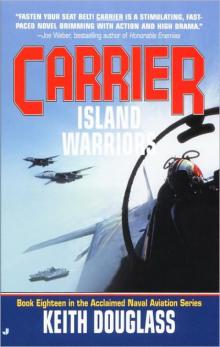 Island Warriors c-18
Island Warriors c-18 Afterburn c-7
Afterburn c-7 Terror At Dawn c-21
Terror At Dawn c-21 Specter sts-2
Specter sts-2 Joint Operations c-16
Joint Operations c-16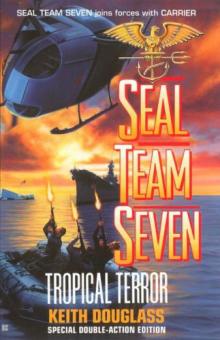 Tropical Terror sts-12
Tropical Terror sts-12 Seal Team Seven 7 - Deathrace
Seal Team Seven 7 - Deathrace Counterfire sts-16
Counterfire sts-16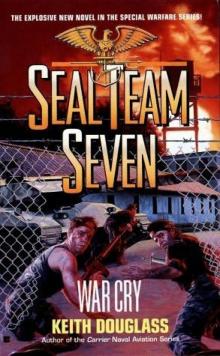 War Cry sts-9
War Cry sts-9 Chain of Command c-12
Chain of Command c-12 Brink of War c-13
Brink of War c-13 Armageddon Mode c-3
Armageddon Mode c-3 Arsenal c-10
Arsenal c-10 Nucflash sts-3
Nucflash sts-3 Arctic Fire c-9
Arctic Fire c-9 Firestorm sts-5
Firestorm sts-5 Typhoon Season c-14
Typhoon Season c-14 Alpha Strike c-8
Alpha Strike c-8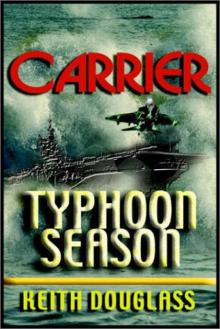 Carrier 14 - TYPHOON SEASON
Carrier 14 - TYPHOON SEASON Bloodstorm sts-13
Bloodstorm sts-13 Ambush sts-15
Ambush sts-15 First Strike c-19
First Strike c-19 Flame Out c-4
Flame Out c-4 Enemies c-15
Enemies c-15 Seal Team Seven 04 - Direct Action
Seal Team Seven 04 - Direct Action Seal Team Seven 01 - Seal Team Seven
Seal Team Seven 01 - Seal Team Seven Payback sts-17
Payback sts-17 Death Blow sts-14
Death Blow sts-14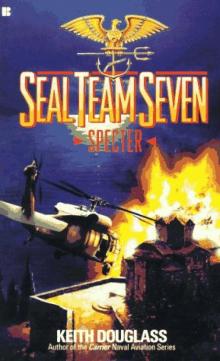 Seal Team Seven 02 - Spector
Seal Team Seven 02 - Spector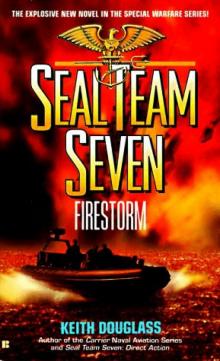 Seal Team Seven 5 - Firestorm
Seal Team Seven 5 - Firestorm The Art of War c-17
The Art of War c-17 Flashpoint sts-11
Flashpoint sts-11 Carrier - Joint Operation Book 16
Carrier - Joint Operation Book 16 Frontal Assault sts-10
Frontal Assault sts-10 Battleground sts-6
Battleground sts-6 Direct Action sts-4
Direct Action sts-4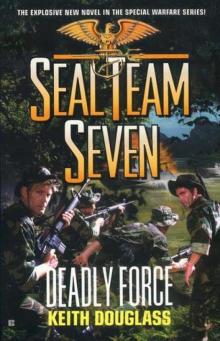 Deadly Force sts-18
Deadly Force sts-18 Carrier 13 - Brink of War
Carrier 13 - Brink of War Pacific Siege sts-8
Pacific Siege sts-8 Deathrace sts-7
Deathrace sts-7